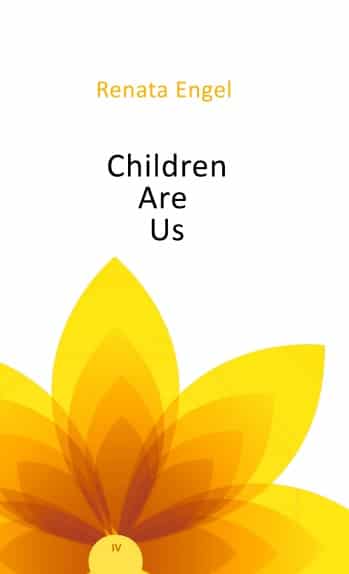Description
I would like to invite the Readers to my last book in the series that I have writtten, to debate on the quite intriguing subject: the three parts of the Self: the subconscious („the inner child”), the ego-conscious and the higher self. In the first volume – „Encounter with The Inner Truth” – I have described humans as multidimensional beings, approaching them in quite general terms. I have also dealt there with the division into three parts of our being. I have presented each of these three parts, to show what characterizes them, and what each of them is responsible for. I have placed them in the structure of the three-dimensional space, the matter-based, the earthly reality. The laws that guide this reality
have been also described there. I have explained how we are influenced by the mechanisms and patterns of our parents, and by the external factors, such as culture, religion, upbringing, politics, the socially accepted norms of behavior. How they build up, in a person, the habitual and emotional reactions that eventually become his second nature. I have presented this knowledge without unnecessary details, focusing the attention on the
general, broad concept of us all – us as the spiritual beings, performing some tasks in the earthly reality, where we are clothed with human bodies for this purpose.
The aim behind it, was for me to share the knowledge about the existing possibilities, in order to broaden the perspective of seeing the reality; the reality in which we live every day. The purpose of it, was also to present the way in which we can change the perspective of seeing who we really we are. In my next book („The Inner Conflict”) I have taken a closer look at the phenomenon of our behavioral, reactive patterns. I have expanded it, to
include the content, related to the mechanics of the formation of the inner conflict in each of us. It is usually created by the clash in the human psyche of all these acquired mechanisms, with the truth that in reality resides insise us. Quite different dreams, expectations from life, desires and emotional needs create a conflict with the structure of the surrounding reality, and its expectations of us, based on the accepted societal norms. What we want, is not always what we need. We have created the world that has a tremendous influence. From the outside, we get the information about how we should behave, what we should desire, how we should realize ourselves, our aims. But most of what the media, the social norms, the society’s expectations, religious truths and science
have laid on the platter, just under our noses, is not what we really care about. However, we have been set, or rather coded, to certain behaviors, reactions and emotions. This book has been intended to focus the Reader’s attention on his development process, and allow him to answer honestly many questions about whether he is living in harmony with himself
and his inner truth. Or does he feel a conflict within himself, between what he needs and what others expect of him? I hope the book has fulfilled my intended purpose.
In the third book – „Love, Partnership and Sex” – I have continued my favorite theme of the
impact of childhood programming (the patterns) on the subsequent aspects of our lives. As I have written before, what I call the subconscious patterns (the patterns of „the inner child”) – i.e. our habitual, learned, emotionally tinged reactions – belong to us, becoming our second nature. We live with them for so long, that we cannot eventually recognize, whether something is our true reaction, or just a learned mechanism. Therefore, it manifests itself in practically every aspect of our lives – whether it be the perception of sexuality, love, work, relationships with people, with partners, or ourselves. Unfortunately, the pattern limits our field of vision and understanding both of the situations we encounter, and the relationships we are in. It resembles the glasses with the colored glass. When
the glass is gray, we see everything in gray, and when it is red, we see everything in red. Working on expanding our consciousness, developing the awareness of things, recognizing these limiting patterns, gives us the opportunity to free ourselves from them, and thus eliminate the flash they impose on our truth.
In this, and my latest, book on this subject, I would like to look in more detail at the little human being, i.e. the child. So far, we have only learned about the „inner child”. Of course, each of us has the latter inside us. It is a very important part of our psyche, playing the key role in the survival of the human species, but also in building our full, complex,
multi-level psyche. However, I have found that gaining the inner introspection, the self-reflection, is sometimes far more difficult than looking at the child we have summoned into this world (sic).
By observing its reactions and emotions, we gain a chance to get to know ourselves more deeply. Learning to have a distance towards ourselves, our reactions, and emotions takes a lifetime. We are forever wondering, how it is possible at all that we are so adult, intelligent, and yet we cannot control our emotional reactions (sic). We just keep on repeating them, over and over again, like a broken music record, even though we understand, don’t we (?), the futility of repeating them. But well, it is not that simple. I have already pointed out, in my first book, that emotions and intellect are two different planes. Generally, they do not
come into contact with each other. As we go through life, gaining more and more practical experience, we learn to handle the emotions intellectually, to take care of them, like a mother gradually masters acting with her own child. This process manifests itself in our gut. But of course, we can also recognize our emotions reflected also outside of us, in our offspring, our children. Actually, their reactions are the reflection of ours. Hence the idea
to bring the subject of the child a little closer to the Reader. Of course, a lot of books have been written on the subject of children.




